Inspiration
When thinking about which destinations might appeal to us the most for 2024, there is a sense that anything is possible again.
As the last corners of Asia fully reopened their borders earlier this year, the impact of the pandemic on our travels finally lessened. We travelers are now more able to set our sights on the furthest adventures again, dusting off our bucket lists - and often returning to the places we love and miss.
The world remains an unpredictable and complicated place in many ways. And we are reminded that travel is the greatest luxury, we must ask ourselves the question: Where should we travel to in 2024? Where to first? What fits our budget?
There are so many compelling reasons to travel abroad in the coming year. There are so many new things on offer, from pioneering ecotourism initiatives to restorative projects that give locals back their stories, connecting their past to their future. And we, the travelers? We are spoiled for choice.
To help you find the destination that's worth your vacation days, we've decided to limit ourselves to Western Europe.
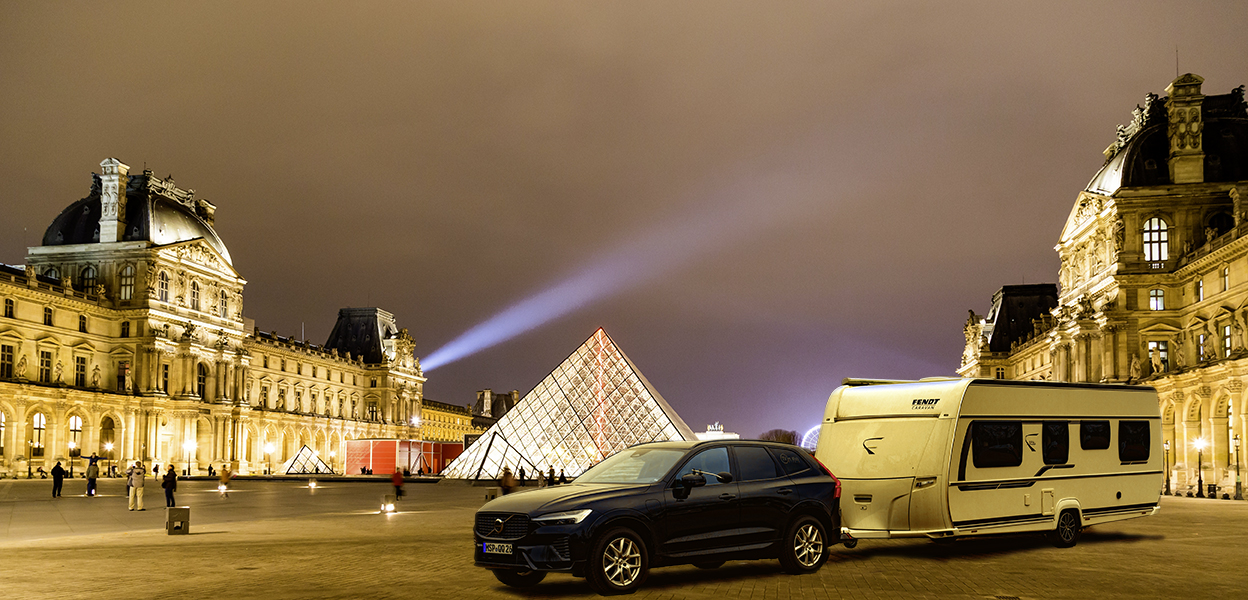
We spent months researching, discussing and selecting from a large list of fantastic cities, regions and countries. The result is our travel guide with the twelve destinations we like best for 2024. These include the cherry blossoms on the German Wine Road, up-close encounters with the scent of perfume in Grasse or the rugged beauty of the Bay of Biscay paired with the warmth of the Basques: «Euskadi!» . The complete bucket list with all its sights, cultural and artistic treasures is a great challenge, but reflects how big, beautiful and diverse our world is - even without long-distance travel.
Here are the 24 suggestions that we think should be on a traveler's radar in the coming year. We can't wait to hitch up our caravan, hit the road and share our experiences with you. - Bert Schwarz
Our 24 Best Places to Go in 2024
Bayonne, France
Go for a vivid, medieval city in your personal style
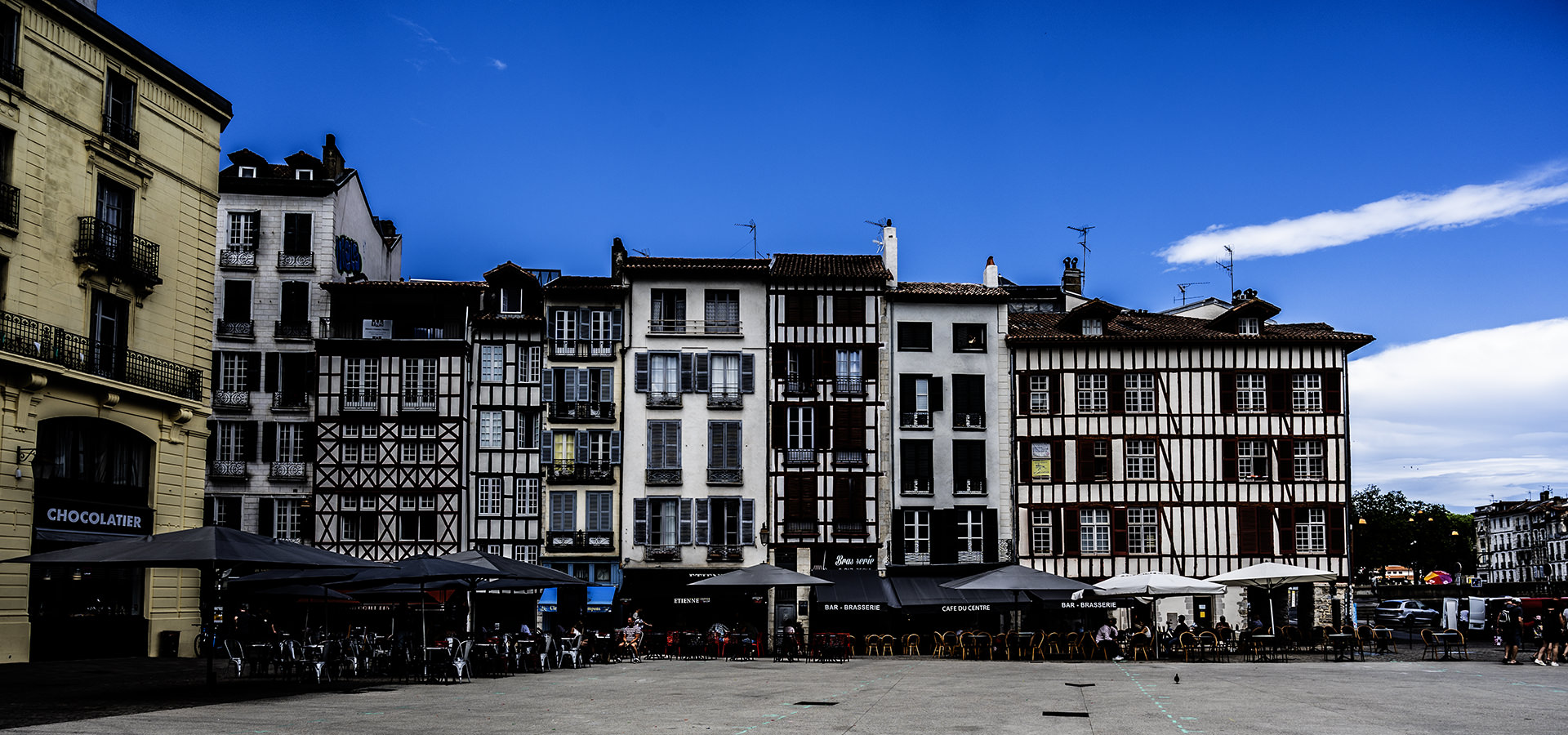
Bayonne is best known for its Basque culture and architecture. Bayonne's most picturesque district stretches along the River Nive, where you are occasionally reminded of a Basque Amsterdam. Bayonne is also the home of chocolatiers and the famous Bayonne ham which is not produced not the city.
Besides strolling through the streets of this beautiful district and enjoying its excellent architecture, you can visit the Basque Museum (Musée basque et de l'histoire de Bayonne). Founded in 1922, it contains a fine collection of Basque and local French history. It is located in a small 16th century town palace, the "Maison Dagourette".
Two products are typical of Bayonne and both have been produced in the city since the Middle Ages: Bayonne ham and chocolate. The ham is cured, air-dried and seasoned with pepper. It comes from the nearby town of Espelette. It is available in every bar and restaurant in the city. You can also visit the ham maker Pierre Ibaialde in the heart of Petit Bayonne.
The second Bayonne specialty is chocolate, which originally came to the city through Sephardic Jews. There are chocolateries on every corner of the city where you can try chocolate - especially in Rue Port-Neuf. Those really interested in chocolate should visit the "Atelier du Chocolat", which is located in the St. Esprit district. In addition to a chocolate tasting, you can learn about the history of chocolate and see a collection of old tools and machines.
Every year during the Ascension weekend, Bayonne celebrates its chocolate days ("Les Journées du Chocolat").
Biarritz, France
Go for the most urban of the seaside resorts along the Basque coast
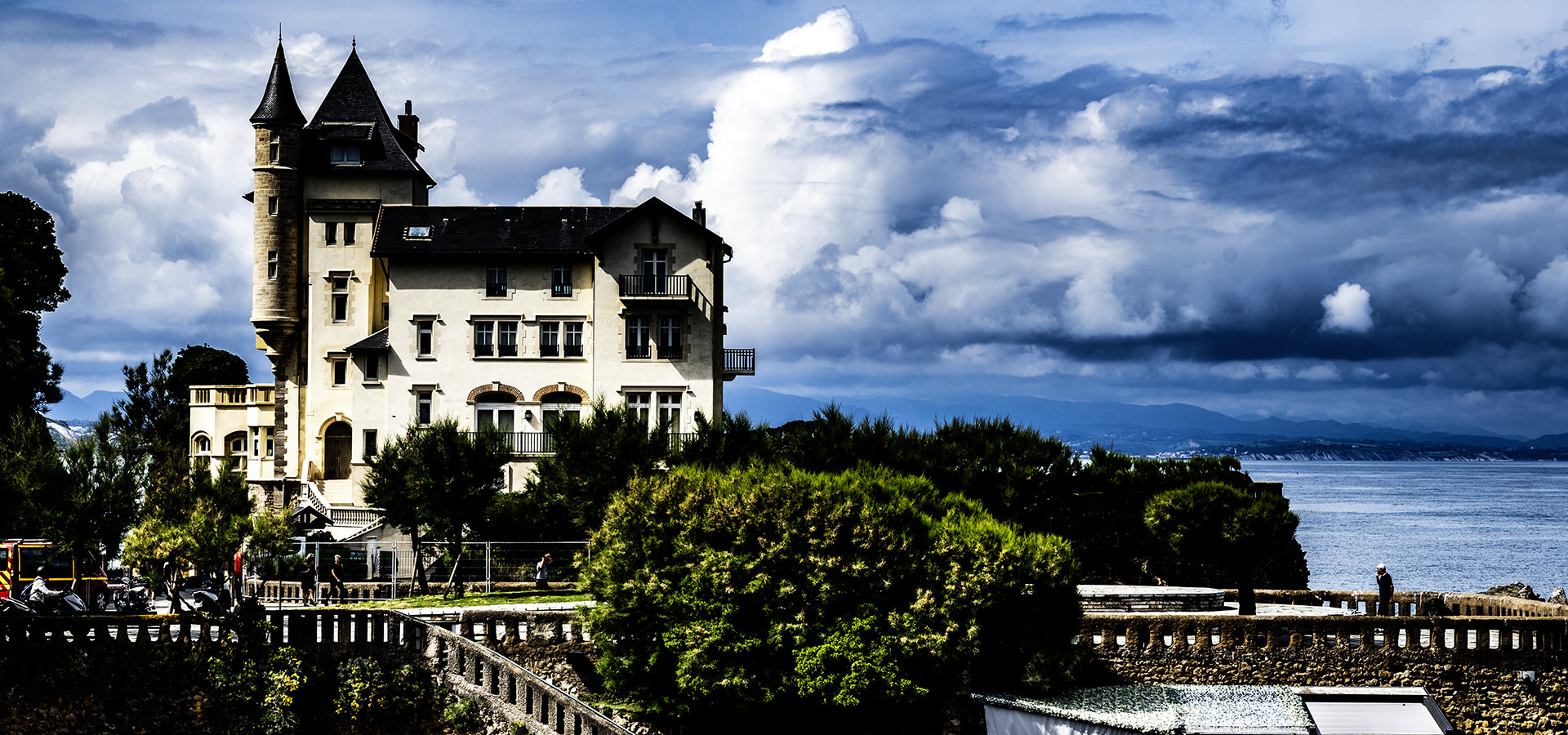
Biarritz seduced the Empress Eugenie and the greats of this world in the 19th century and is a must on the Basque coast with its great beaches, golf courses, thalassotherapy centers, stores, art galleries and trendy bars. A paradise for surfers and gourmets.
Biarritz and the Atlantic Ocean are inextricably linked. The climb (248 steps) to the top of the lighthouse is rewarded with a breathtaking panoramic view from the Spanish coast to the vast beaches of the southwest coast of France.
In the middle of Biarritz, opposite la Vierge Rocher, the Biarritz Aquarium opens its doors and takes us on a discovery of the seabed. Fifty aquariums await us with jellyfish, sharks and seals... Discover the species that inhabit the Atlantic coast.
Once a fashionable seaside resort where the world's wealthy used to gather, Biarritz is still adorned with imposing buildings, such as two Art Deco casinos, the famous Villa Belza, the sumptuous luxury hotel Hôtel du Palais, a gift from Napoleon III to Empress Eugénie, and the famous Villa de la Plage. to Empress Eugénie, and the Byzantine-style Orthodox church, which still bears witness to the fact that Russian high society used to come to Biarritz for summer retreats in the last century.
Saint-Jean-de-Luz, France
Go for a formerly Basque corsair hideaway that is now a seaside resort

Just twenty minutes off of Biarritz and similar in many ways, Saint-Jean-de-Luz is very different: the atmosphere here is even more relaxed. The town is very lively in summer, but not overcrowded.
In June 1660, one of the most important political weddings in history was celebrated in Saint-Jean-de-Luz, making this royal event a source of pride for Les Luziens to this day.
The main attraction of Saint-Jean-de-Luz is undoubtedly its beautiful beach, known simply as the Icon de numéro Grande plage. The crescent-shaped beach is protected from the waves by three huge dykes, making it the ideal place for families with children, not to mention the numerous activities and games on offer along the promenade.
A stroll along the promenade, which runs along the entire bay, is an absolute must. You can admire the exceptional panorama: the Cantabrian Sea on the sea side and the Basque architecture on the city side.
Colmar, France
Go for the most Alsatian town of Alsace
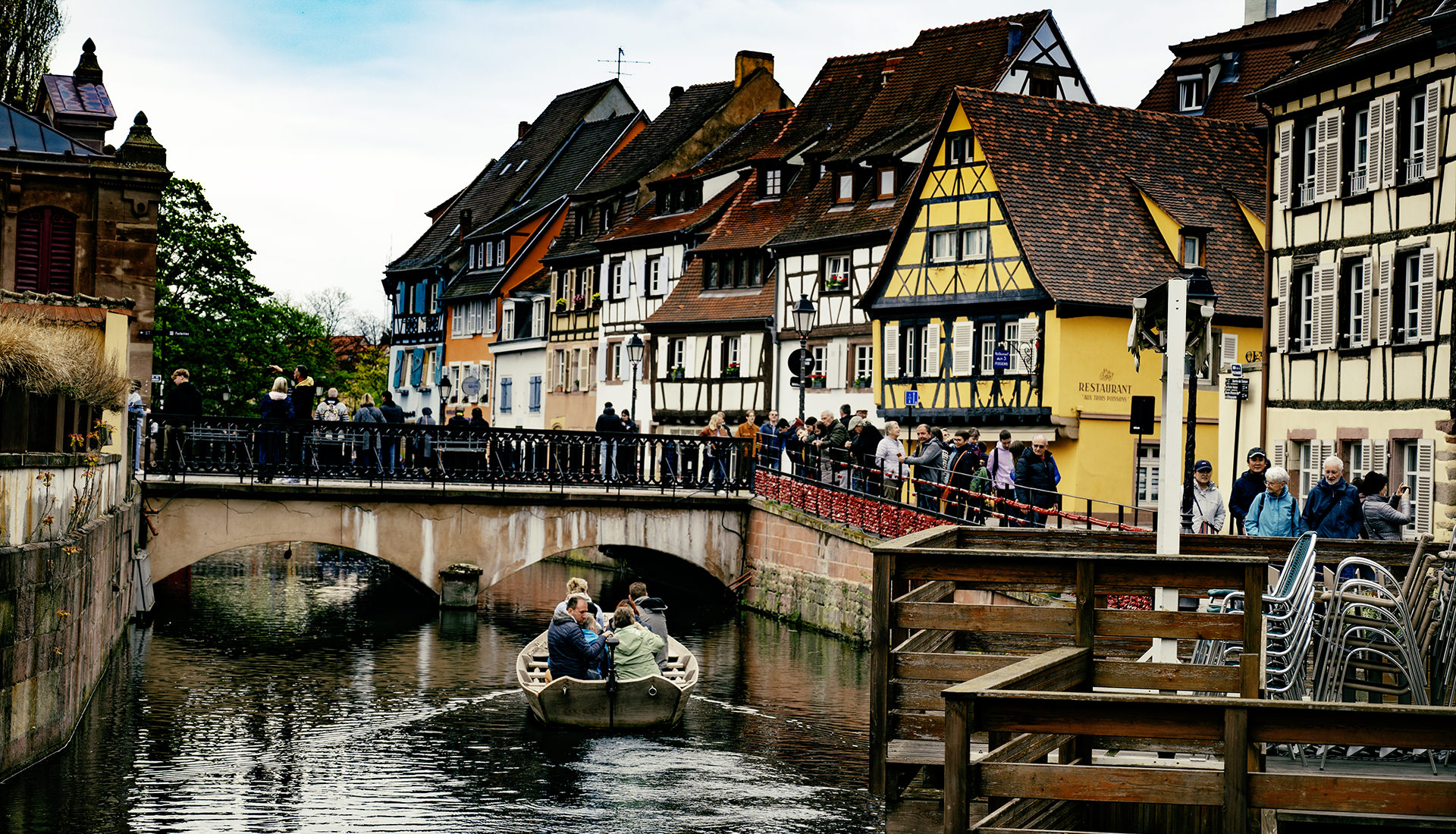
Nestled among the vineyards, the town has managed to preserve its way of life: Cosiness and hospitality can be found everywhere here. Colmar offers an exciting tour through over a thousand years of European history with a rich cultural heritage that is among the best preserved.
With around 70,000 inhabitants, Colmar is the third largest city in Alsace after Strasbourg and Mulhouse. It was first mentioned in a document in 823. Colmar was granted city rights by Frederick II, became an imperial city in 1226 and in the middle of the 14th century became a member of the League of Ten Cities, an alliance of 10 free imperial cities in Alsace. Colmar has belonged to France since 1673.
We start our tour of the old town at the Unterlinden Museum through the Rue de Tête past the Maison des Têtes, decorated with over 100 heads, to the Dominican Church (Église des Dominicains). Built in 1283, the building is now a museum and houses Martin Schongauer's most important work. Colmar's most important religious building is St. Martin's Cathedral (Cathédrale St. Martin) with its valuable stained glass windows. The Pfisterhauswohl, which was built around 1537 and is considered the most beautiful half-timbered house, is located close to the Martinsmuenster.
A stroll through the neighboring district of Little Venice (Petite Venise) is well worthwhile. Picturesque half-timbered houses adorned with flowers are located along the Lauch creek.
Strasbourg, France
Go for a city that preserves the continuum of time in its own way
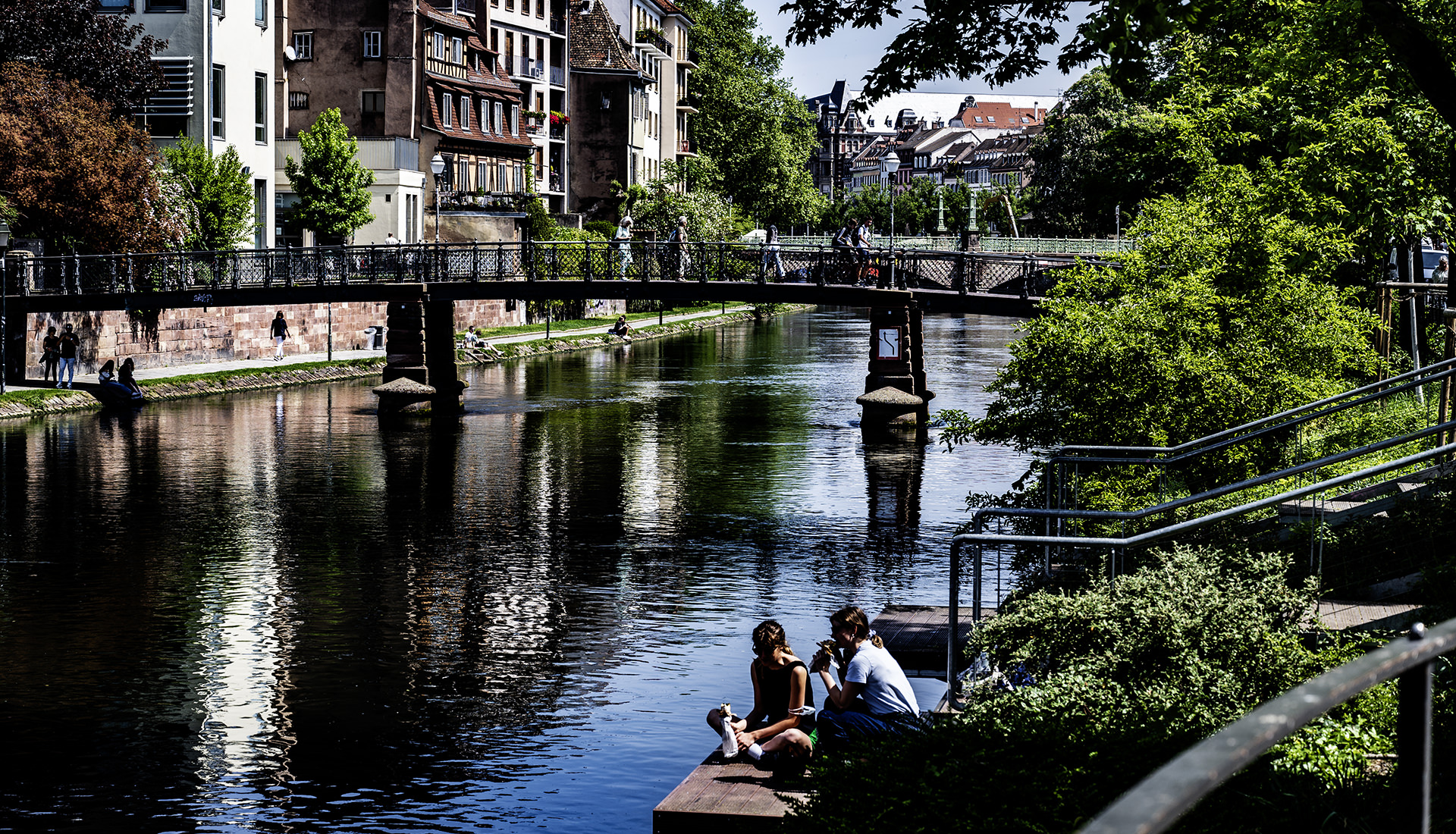
Strasbourg is one of the most unusual cities in France. A stone's throw from the German border, it is easy to remember that the city belonged to one state or another, depending on the outcome of various wars. Its history ... and culture ... has always been closely linked to that of the neighboring country, Germany.
Strasbourg is the perfect overture to everything that makes Alsace so unique. On a fine line between France and Germany, between a medieval past and a progressive future, the city manages to bridge the gap in an inimitable way.
If you take your eyes off the fascinating Gothic cathedral for even a minute, they will lead you into the winding alleyways of the old town with its crooked half-timbered houses, into the cozy wine taverns along the canals in Petite France and marvel at the fact that this city, which is so famous for its Christmas markets and gingerbread, is also home to the glass EU quarter and France's second-largest student community. But that's Strasbourg: the more beautiful its contradictions, the more perfect its cross-cultural individualities.
San Sebastiàn, Spain
Go for an urban gem with a lively old town, great beach, gastronomy and culture
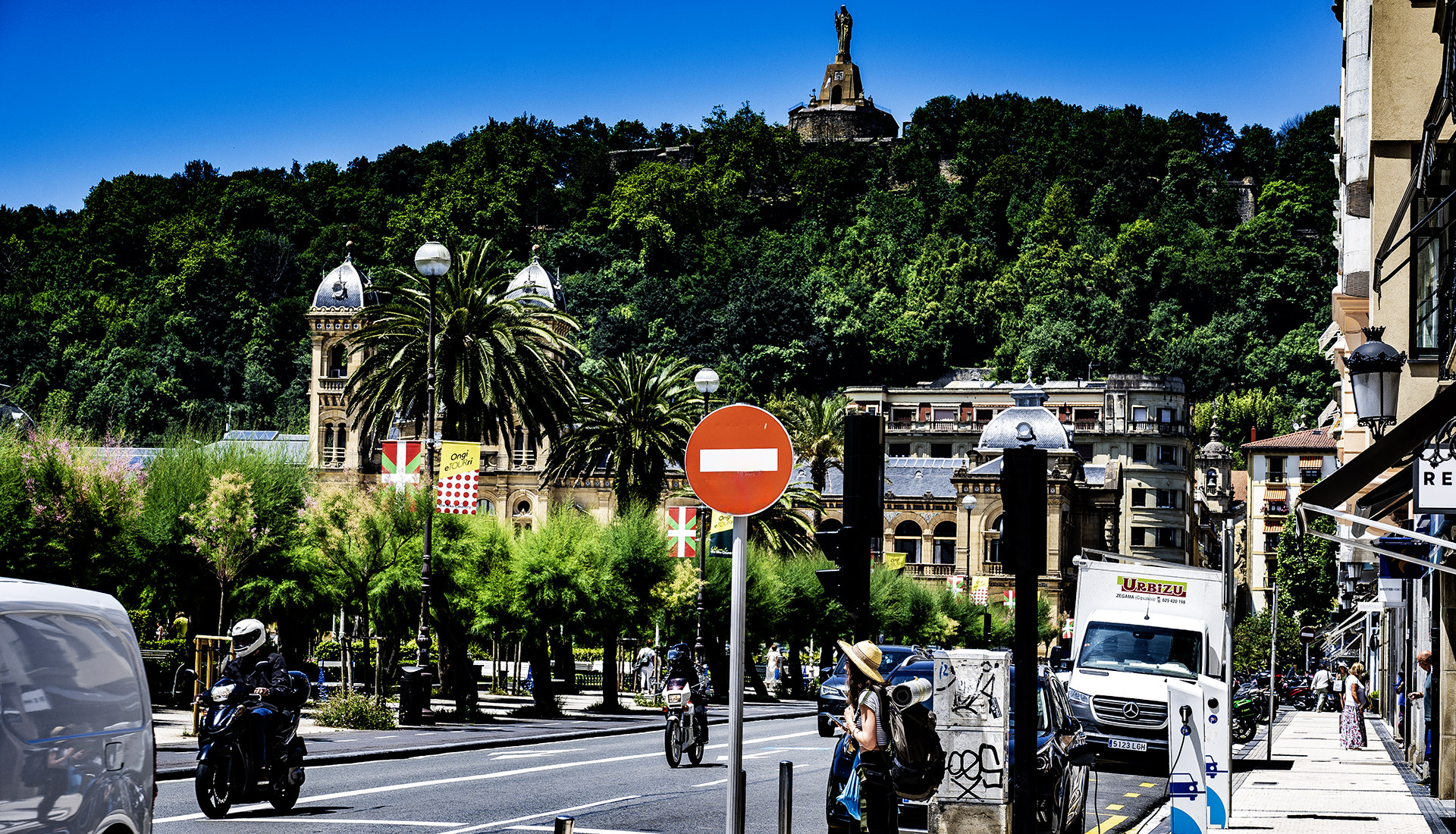
The seaside resort of San Sebastián, known as Donostia in Basque, is one of the most beautiful towns on the Basque coast. Situated on a beautiful bay, surrounded by the foothills of the Pyrenees, the city offers a lively atmosphere, exceptionally good cuisine and a varied cultural offering.
This made the city famous during the Belle Époque, when Queen Maria Cristina established her summer residence here. San Sebastián's obviously glamorous past is still clearly visible throughout the city today.
La Concha, the most beautiful city beach in Europe, is dotted with extraordinary villas and is home to the famous spa La Perla (The Pearl). The beach promenade has an ornate white railing that has become a symbol of the city. Two other, less exclusive beaches than La Concha complete the town center. Surfers are particularly familiar with Zurriola beach.
In recent years, San Sebastián has received much praise for its gastronomy. The city has 14 Michelin stars in 6 restaurants and can boast of having more stars per inhabitant than the rest of the world except Tokyo. - Oh well. This needs further investigation, because not only did we come here spontaneously, but we also spontaneously stopped at a bar to eat tapas, which we were highly recommended to do ... and which are conveniently available almost everywhere.
San Sebastián is also famous for its pintxos. And the best place to try them is in the Parte Vieja (historic quarter). This charming old city center is known for being home to the largest concentration of bars in the world. Pintxo is king here and the cuisine is taken very seriously. Naturally, we went to see for ourselves.
Hendaye, France
Go for a small, exclusive seaside resort located directly at the Spanish border

Located at the beginning of the Basque cliffs, the charming seaside resort of Hendaye lies on a harmonious stretch of coastline dotted with numerous neo-Basque style villas from the beginning of the 20th century. You can explore this listed heritage on a stroll along the pleasant boulevard by the sea.
Hendaye is located right on the border with Spain between the sea and the Pyrénées. The town with its three-kilometre-long sandy beach offers plenty of variety throughout the day. We start our excursion in the north of the town, where the coastal path stretches along the cliffs. Surrounded by a protected natural park, you can enjoy the coolness of the trees and a magnificent view of the Baie du Figuier and Hondarribia bays in Spain. Then it's off to the Château d'Abbadia. The extravagant neo-Gothic castle and its observatory are among the town's most interesting sights. Built in 1864 by order of Antoine d'Abbadie, it reflects the eccentric personality of its former owner.
A special natural spectacle awaits you on the large beach: the imposing twin rocks Les deux jumeaux are among the landmarks of Hendaye. On the promenade along the beach, a building in Moorish style catches the eye: the former casino of Hendaye. Hendaye has beautiful green spaces with numerous different types of trees: tamarisk, palm, eucalyptus, mimosa and oleander. - The town center is characterized by striking buildings in the neo-Basque architectural style of the early 20th century. From here, the route leads down to the pretty port of Caneta. There, the bay of Txingudi nestles into the landscape. And just opposite is Spain. On the way back, you pass another Moorish-style building. We end the evening with a Mediterranean atmosphere and delicious tapas ... on the Spanish side of the border.
La Rhune, France
Go for breathtaking nature with mountains and sea
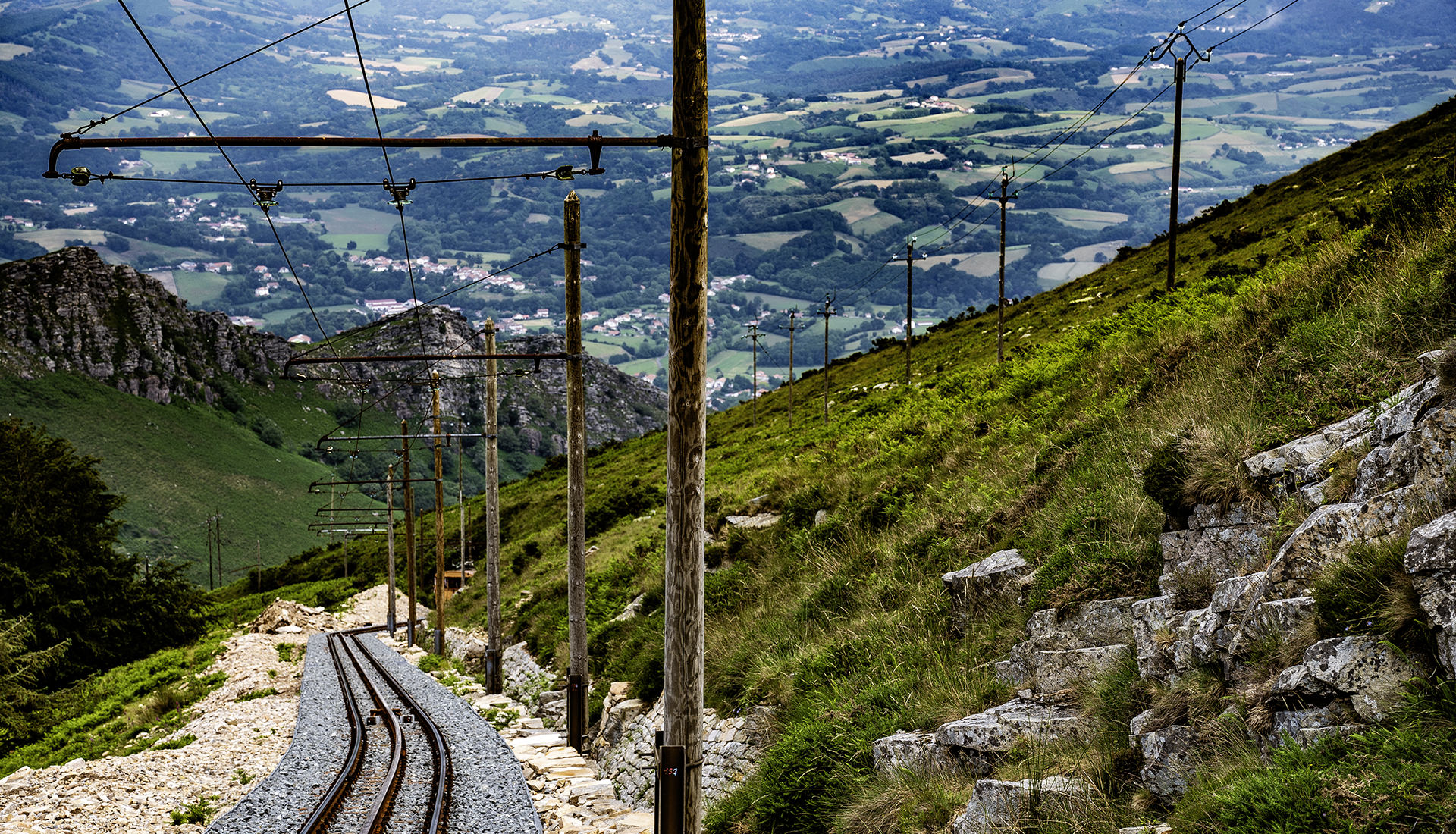
The summit of La Rhune is 905m high and very popular. Depending on the route, the hike takes between 2½ hours and just under 5 hours, but everyone is rewarded with an exceptional 360° panorama ... when the clouds are gone. We take the old cog railroad for around 20 minutes.
From the open and beautifully restored old wagons, we enjoy the typical green hills of the Pays Basque on our way to the summit of La Rhune. We see pottoks, semi-wild ponies that you should be careful with. They look nice, are not shy and are used to people walking past. But they are the bosses on the mountain and if they don't like something, they kick it. From a safe distance, we enjoy the view, which is a foretaste of what awaits us at the summit. There is plenty of space for walking and picnicking - in the restaurants that are 'already' in Spain - or with the provisions we have brought with us. The panoramic view from the summit is exceptional: it extends over the hills of the Basque Piedmont dotted with colorful half-timbered houses, the peaks of the Pyrenees, the Basque coast and the bay of Saint-Jean-de-Luz with its long, bright beaches visible from afar. Then it's time to take the train back and discover new views.
Bergerac, France
Go for an old, medieval town with young people
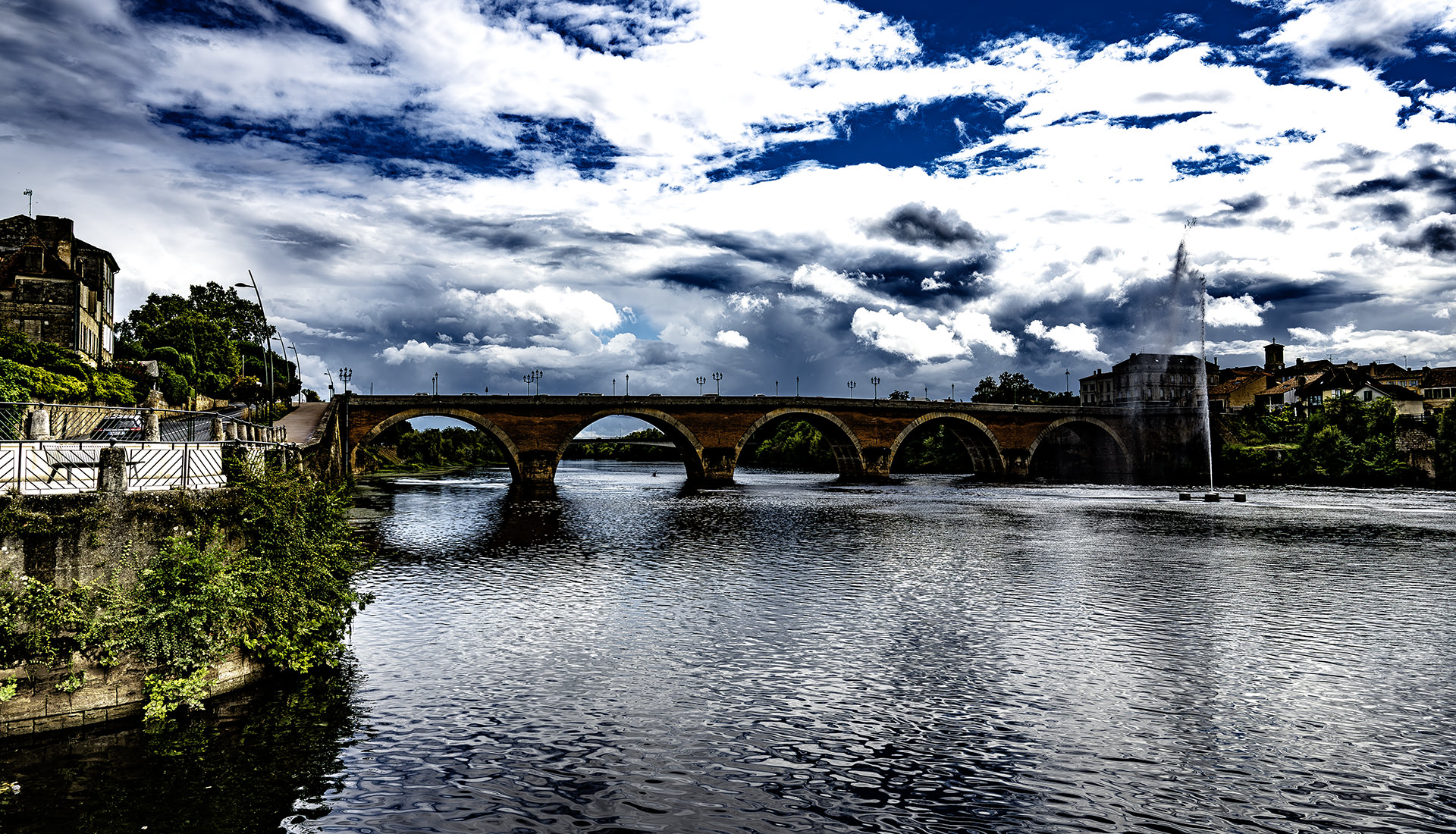
Bergerac is a town of art and history. Here, on the banks of the Dordogne, it is a great place to live. People here like to eat and laugh. Gastronomy is the theme here: e.g. fresh poultry with foie gras on a piece of toast. A good meal. With a wine from the region, of course.
Bergerac welcomed us with its charm and friendship. We spent just under two days here to get an overview. This is what we have learned: We have to come back, the typical French dimensions of the parking garages, especially in the exit areas, endanger our own metal and rims and the parking fees are manageable.
The beautiful old town with its historic half-timbered houses simply has to be explored. That's not so bad, even for lazy pedestrians like me. Firstly, the old town is not huge and secondly, if you want to, you can wander from one restaurant to the next. Nobody has to starve and die of thirst here.
In any case, it's a good idea for every visitor to check in at the Office de Tourisme on Quai Cyrano. They have good tips for the clueless.
And then there's Cyrano de Bergerac, who is merely a literary character. Although Savinien Cyrano, the real-life model for Edmond Rostand's hero, never stuck his long nose into the town in Périgord, he nevertheless became one of the most famous Bergeracois. The town owes its fame to this character and his spirit can be felt everywhere.
Sarlat-la-Canéda, France
Go for a lively town from the Middle Ages which seemingly was perfect for a movie set
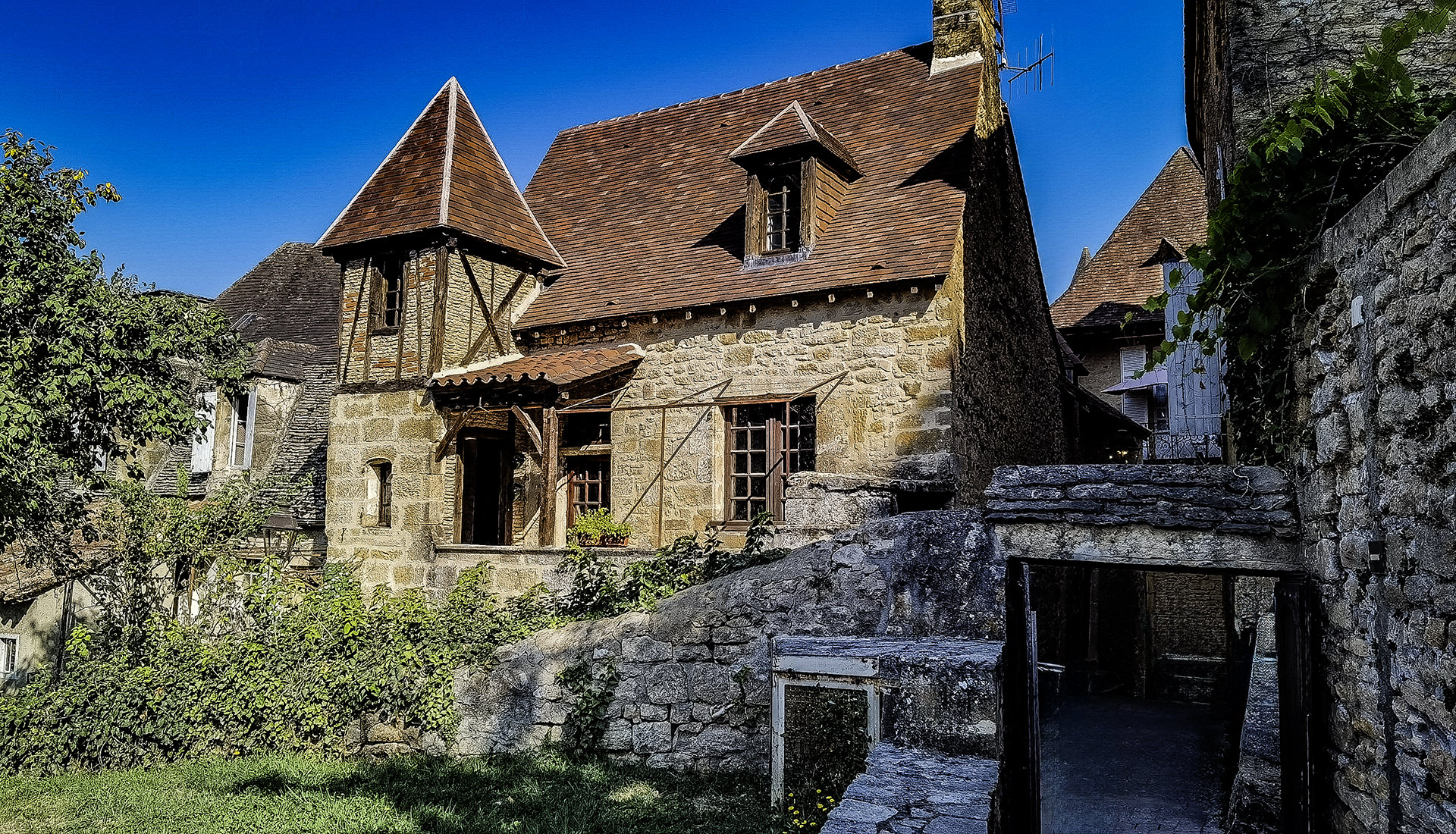
Sarlat-la-Canéda is the most famous town in the region, located in the Périgord Noir and is one of the best known and most visited places in France. It is also one of the most attractive. In and with the beautifully restored buildings, you can breathe in the past and present of the town, which lies just a few kilometers north of the river Dordogne.
Located in the east of the department between the Dordogne and Vézère rivers, Sarlat is today one of the most beautiful medieval ensembles in Europe. Sarlat has preserved the picturesqueness of its streets and the beauty of its monuments. We walk through the streets of the town and admire almost a thousand years of authentic architecture. Sarlat has remained down-to-earth and is the ideal place to discover Périgourdine gastronomy: a paradise of truffles, mushrooms, foie gras, sweets, cakes and the fine delicacies of the region, the périgourdins. This culinary tradition of aromas and flavors can be found in the beautiful markets of Sarlat. They are held all year round, twice a week, on Wednesday and Saturday mornings. This is a must if you are visiting the Périgord.
Lascaux IV, France
Go for a time travel to the very early inhabitants of the Périgord
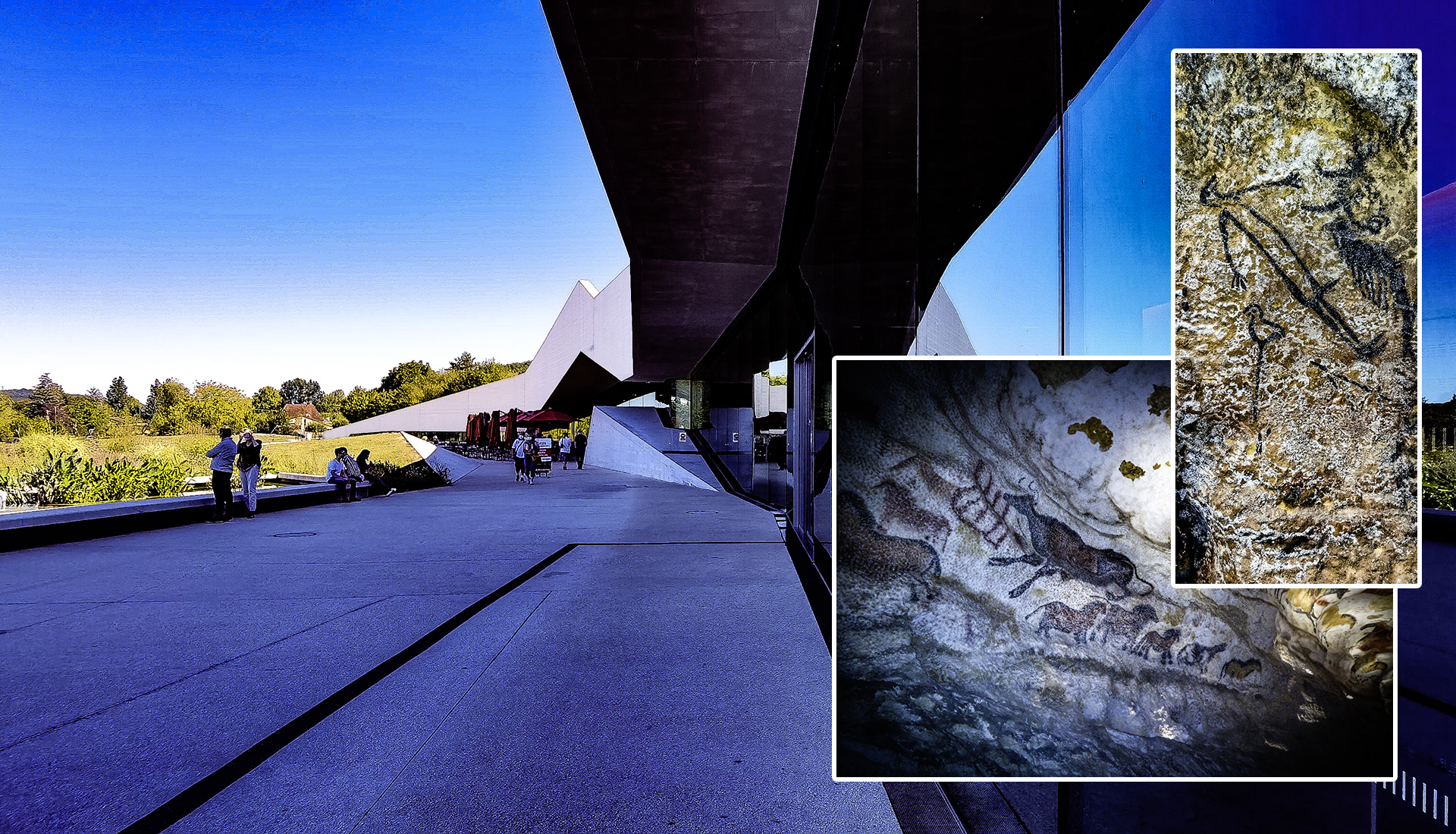
A good 10 minutes from our campsite, on the periphery of Montignac, you'll find the Lascaux Cave. It is world-famous for its paleolithic cave paintings. They are estimated to be up to 20,000 years old.
The Vézère Valley in the Dordogne, which has been declared a UNESCO World Heritage Site, is full of prehistoric sites with around 25 caves, including the famous Lascaux Cave in Montignac. 9,000 m² of buildings blend into the landscape, stretched out like an open façade, almost invisible from above thanks to the green roof. This is the Lascaux International Center, or rather «Lascaux IV», as the cave has been almost completely reconstructed. Opened to the public in 1983, Lascaux IV was the first facsimile of a cave in the world to contain the two most famous galleries: the Salle des Taureaux and the Diverticule Axial, which have been reproduced identically with impressive precision. A few hundred meters from the original cave is "Lascaux IV", ready for an extensive visit that can take place as close as possible to the original cave.
Rocamadour, France
Go for a vertical village - stage of the Route of St. James
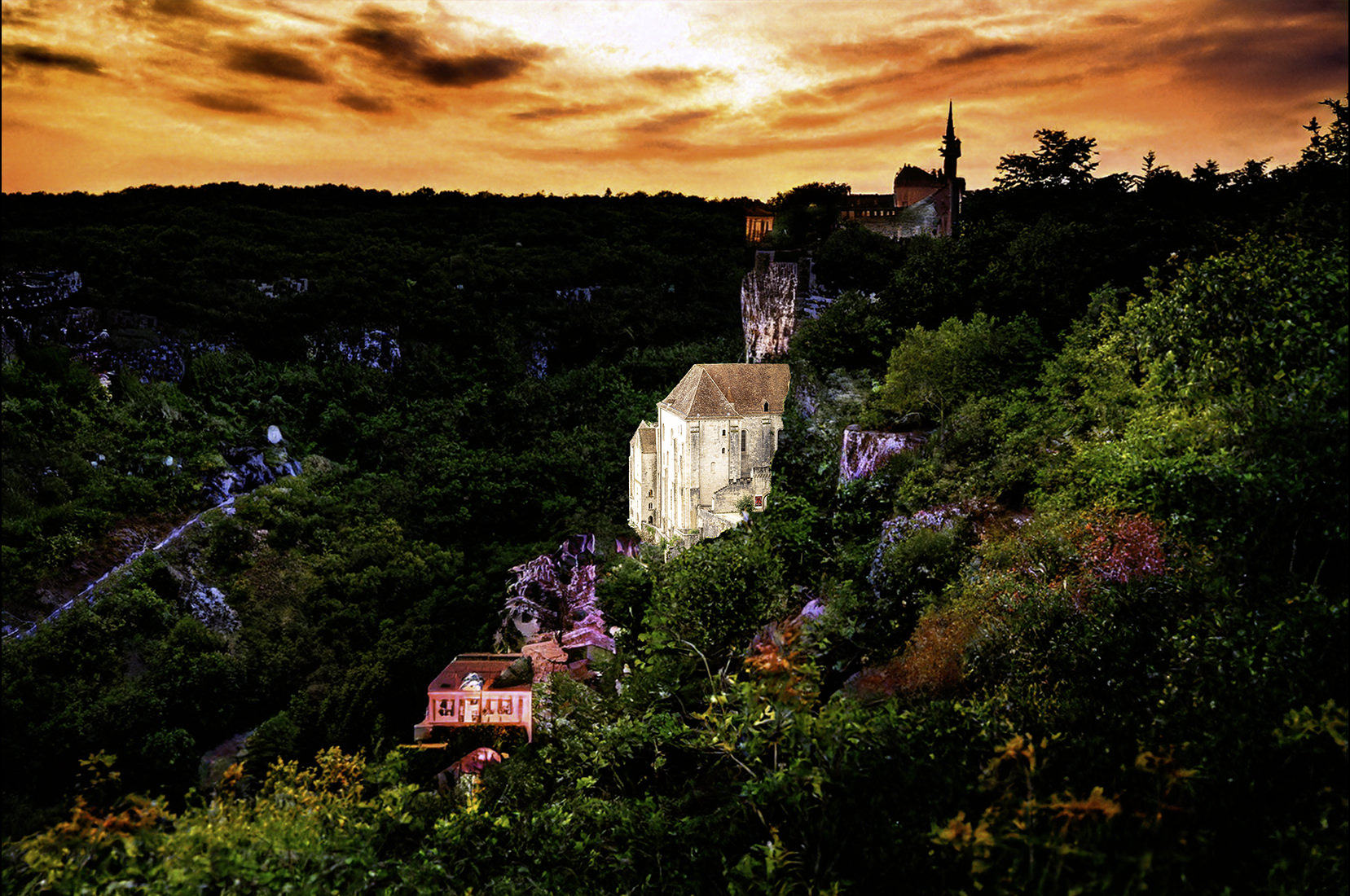
Rocamadour ist ein kleines Dorf auf einer Klippe mit Blick auf das Alzou-Tal in der Region Lot. Rocamadour ist vor allem ein bedeutender Wallfahrtsort. Seit dem 12. Jahrhundert zog es Herrscher und Heilige aus ganz Europa an. Mit dem wachsenden Erfolg wird die kleine Stadt nach und nach mit religiösen Gebäuden und Festungsanlagen überbaut.
Rocamadour is a small village on a cliff overlooking the Alzou Valley in the Lot region. Rocamadour is above all an important place of pilgrimage. Since the 12th century, it has attracted rulers and saints from all over Europe. With its growing success, the small town was gradually built over with religious buildings and fortifications.
Soon after, pilgrims began to arrive and many reported miraculous events. Then as now, there were 216 rock steps known as the Grand Escalier, which lead to the Chapel of Our Lady. Pilgrims often climbed up on their knees. Kings and clerics came in large numbers. In 1166, Rocamadour's fame skyrocketed when a perfectly preserved corpse was found in an old grave near the chapel of Our Lady. The body was said to be that of Saint Amadour. He was a hermit from the 4th century, but not much is known about him. The statue of the Virgin Mary purchased by Zacchaeus, known as the Black Madonna, can be seen in the Chapelle de Notre-Dame (according to historians, it probably dates from between the 9th and 12th centuries). There are also models of sailing boats hanging from the ceiling. They were offered by sailors who prayed to Mary for safe passage and salvation from shipwreck. Above the door leading to the chapel is an iron sword which, according to legend, belonged to the knight Roland, a nephew of Charlemagne. As he lay dying, he called on the archangel Michael to help him throw the sword so that it would not fall into enemy hands. It landed several hundred kilometers away in the rock face of Rocamadour. You can see it embedded in the stone (and with an 18th century appearance).
La Gare - Espace Robert Doisneau, France
Go for a place to discover the art of an exceptional photographer
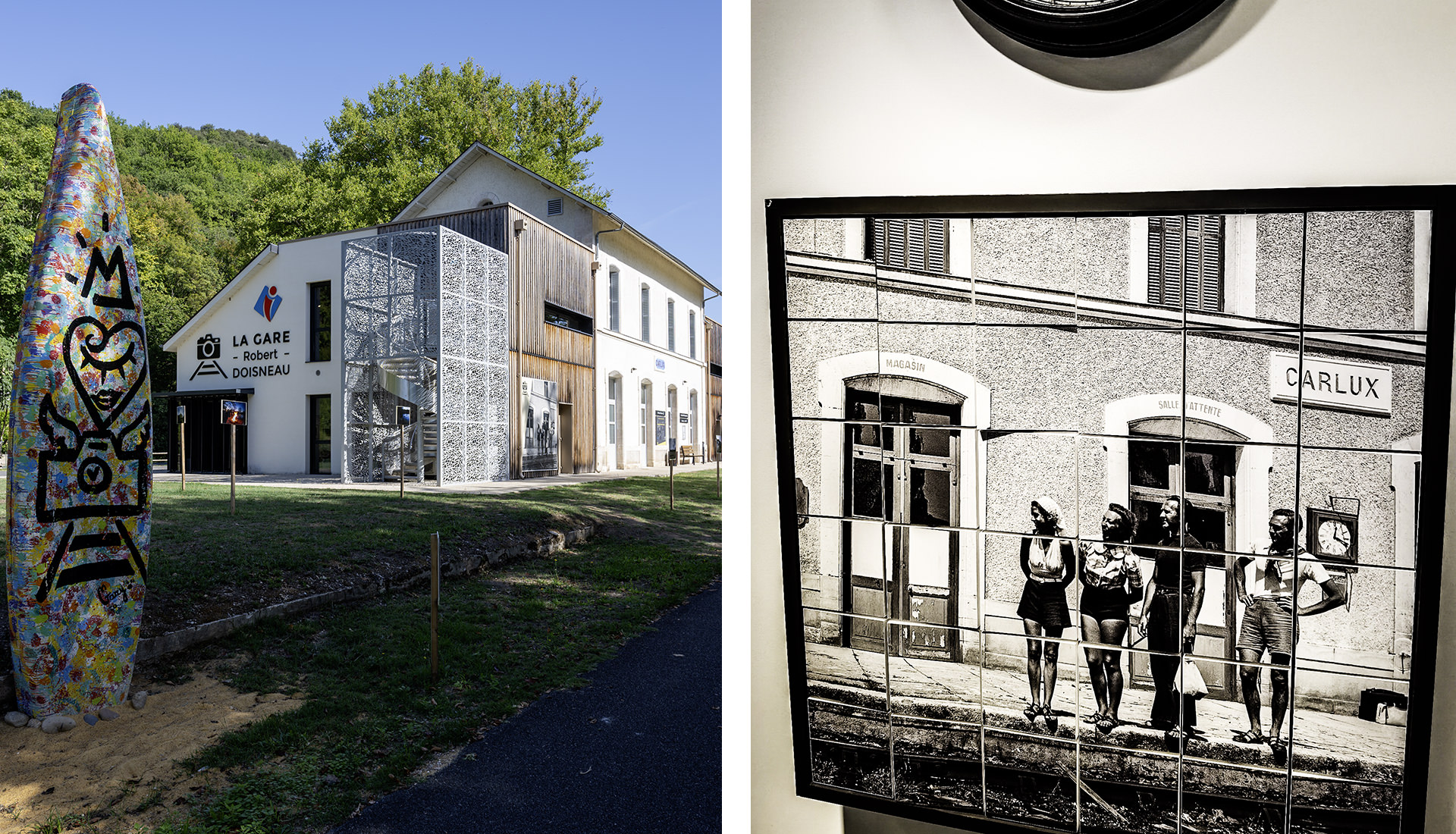
Anyone seriously interested in the profession of photographic art must also be familiar with the old production methods, even if today every smartphone can ostensibly take pictures. That's the difference between snapping a picture and photography.
This former railroad station has been tastefully renovated and presents an excellent collection of photographic art by Robert Doisneau. Even in France, railroad lines are being closed down and the odd station remains. One has been lovingly and tastefully renovated here in Carlux, right next to the former railroad embankment, which is now a fast cycle route between Sarlat and Cazoulès. The Robert Doisneau station also temporarily exhibits the work of other artists throughout the year. An opportunity to discover more photographic art. Spread over three levels, it houses an unusual exhibition where design and authenticity coexist. The Gare Robert Doisneau hosts two exhibitions that are unique in France. This is the only permanent exhibition dedicated to Robert Doisneau. On the first floor, we find photos of Robert Doisneau's vacations in the Dordogne and the Lot from August 1939, the beginning of the Second World War. We discover famous landscapes, family photos and pictures of canoe trips... Timeless photos of an (almost) unchanged Dordogne.
Grasse, France
Go for an extraordinary city with an exclusive tradition

Anyone who visits Grasse has to deal with the subject of "perfume". Not just for the sake of it, but because otherwise you won't be able to understand the place you are walking or driving through. As always, everything here is connected to everything else and the development of the town is inextricably linked to the development of fragrances.
During the Middle Ages, the leather industry was the leading trade and tanners had their workshops spread throughout the city. Grasse leather was very well known and popular. The uric acid used for tanning at the time produced a pungent, unpleasant odor. To put an end to this, baths with flowers from Provençal gardens such as lavender, myrtle, jasmine, rose, wild orange blossom and mimosa were tried.
This new trend spread to the royal courts and then to high society as a whole. Orders poured in and so the perfumers' businesses grew and gradually pushed the tanners out of the city.
The rare flowers of Grasse - lavender, myrtle, rose, orange blossom, mimosa and especially jasmine - the city's "mythical flower" - have become local treasures. From the production of natural raw materials to the manufacture of concentrates, the entire centuries-old know-how is brought together here.
Cyrano's Dream - Villa Arnaga, Cambo-Les Bains, France
Go for a great author's dream of the century before last

Villa Arnaga reflects the wavering of its builder's heart. He was torn between his preference for solitude and simplicity, which is reflected in the exterior of the house and the garden with its flower meadow to the west.
Before Arnaga became a museum, it was a dream, the dream of a great author of the century before last, Edmond Rostand. He had longed for this house, thought it up and designed it down to the smallest detail. The neo-Basque style house appears traditional from the outside. Inside, it is reminiscent of a magnificent theater set. Around the large house, Edmond Rostand had a 15-hectare garden laid out, which reflects the contradictions of this man: on the one hand wealth and splendor, on the other gentleness and intimacy. It is a rare case in literary history: every member of the Rostand family is a writer. Rosemonde Gérard was the first to publish. Edmond Rostand became immensely famous for his plays, in particular "Cyrano de Bergerac" in 1897. There are statues and other links to this literary figure in the town of Bergerac.
Paris, France
Go for the City of Love

After many years, I return to Paris. To the same campsite. With the same ideas. Full of curiosity about what has probably changed in this city in more than thirty years. To be blunt: a lot has changed.
When we used to visit Paris we drove into the city and let ourselves be ... quite haphazardly ... drifting. We spent many hours window-shopping, then popped into the odd café for a coffee or two and maybe a slice of cake. Or we were a little hungrier and treated ourselves to a crêpe or galette and a glass of wine. (Almost) everywhere we went, we met relaxed people going about their business and giving us tips here and there on what we should definitely visit and see. Those days are over. Even the number of the formerly ubiquitous 2CVs has dwindled to the amount of "Oh! Look!". Almost everywhere we go, people seem as rushed as in any other big city. The traffic seems to have decreased, but Paris seems to have become one big construction site that disrupts the flow of traffic very efficiently. On the other hand, there are many more parking garages than before, which is very pleasant on the one hand - but also very expensive on the other. The metro is an ideal means of transportation. The system and the ease of use, even for the uninitiated, convinced me as a self-confessed rejecter of public transport. However, the task of getting from the campsite to the nearest metro station, for example, confirms all my skepticism.
Centre Pompidou, Paris, France
Go for contemporary art in an unusual setting

We decided to visit the Centre Pompidou to prepare for our trip to Paris for "just" one week. We liked the concept of constantly changing exhibitions and modern and contemporary art is more our cup of tea.
The Centre national d’art et de culture Georges-Pompidou, or Beaubourg as the locals like to call it, is a state-run art and culture center in the 4th arrondissement of Paris. It was opened on January 31, 1977 on the initiative of former French President Georges Pompidou after five years of construction. This museum begins to be interesting from the outside. Staircases and walkways on the outside of the building run through glass tubes that constantly open up new perspectives of Paris. And from here you enter the exhibitions, which - it feels like - are constantly changing. It's a concept about which we've already heard "it's always under construction". Offering new exhibitions frequently is the concept of this museum. We actually find this exciting, because when you visit again, you enter a completely different museum that you have to adjust to again. The art museum's contemporary collection is located on the 4th floor. Since the centenary of the birth of the artist Joseph Beuys in 2021, almost the entire extraordinary collection of works by the German artist has been presented there in a separate area. 20 works by Beuys, who became famous for his felt creations, are staged there in an extraordinary way. It is complemented by Hildegard Weber's installation "Hommage à Beuys '86". Environments, sculptures, objects, drawings, films, videos, photographs, archives and documents bring together all facets of Joseph Beuys' charismatic personality in a tour through four halls.
Sanary-sur-Mer, France
Go for a fishermen's village with an eventful history
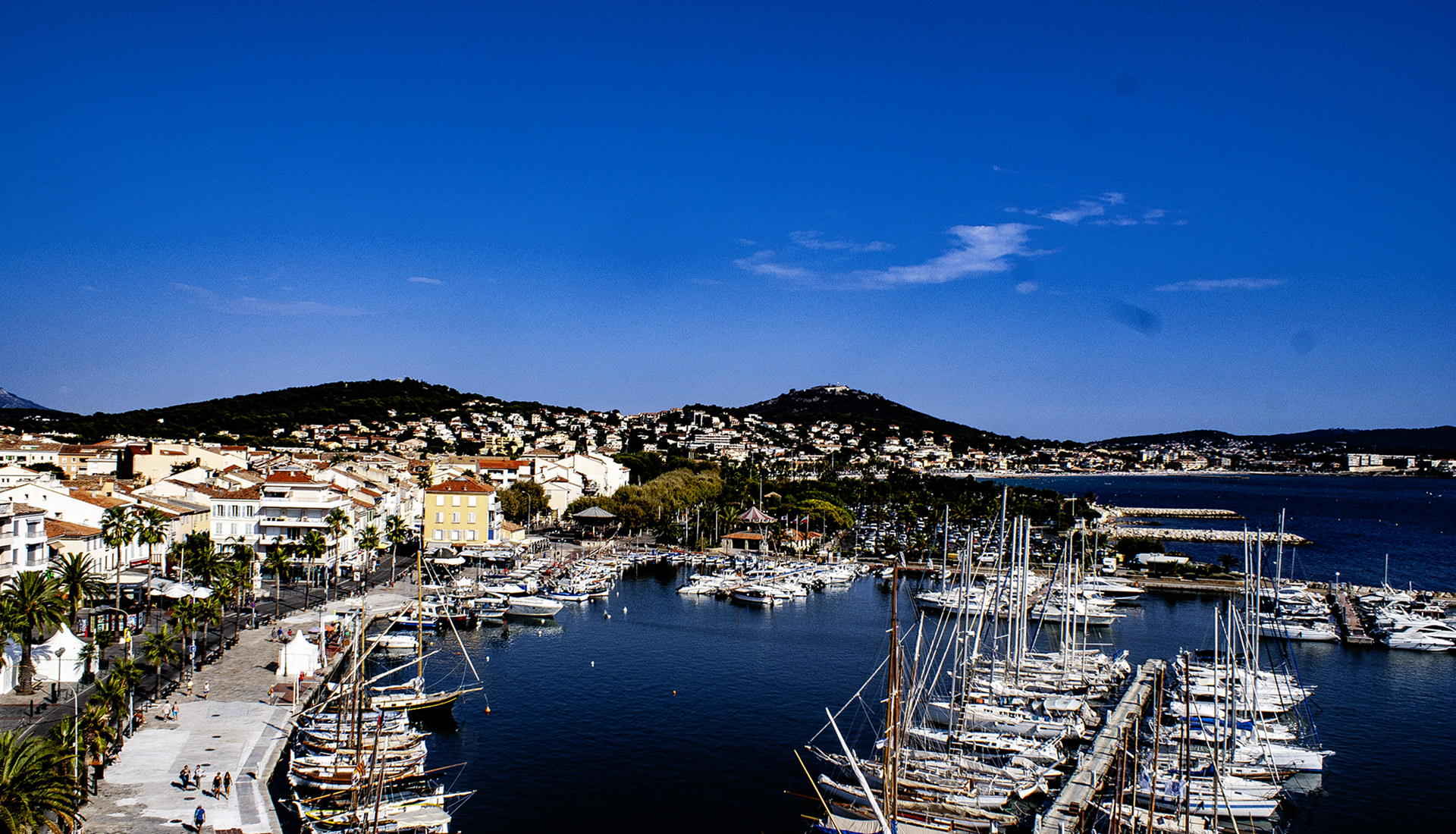
Coming from Marseille, you drive through Bandol on the way to Toulon or past it on the ring road. In this case, you will miss a seaside resort that has been very popular since the 19th century and is located on a pretty bay.
Sanary has been an insider tip for more than 100 years and has a somewhat turbulent history: After 1933, Rene Schickele brought his persecuted friends - Bertolt Brecht, Lion Feuchtwanger, the Mann brothers, Erwin Piscator, Ernst Toller, Franz Werfel and many others. Sanary-sur-Mer thus became a refuge for an elite expelled from Nazi Germany. This only lasted until 1940, as many of those who had not emigrated to the USA in time were then interned by the Vichy government in the infamous camps, for example in Les Milles near Aix-en-Provençe. Some, the Feuchtwangers, Werfels and Heinrich and Golo Mann, managed an adventurous escape over the Pyrenees. The Manns' villa "La Tranquille", which was blown up in 1944 before the Allies landed, was rebuilt. Today, Bandol and Sanary-sur-Mer are still very popular seaside resorts. And the rosé from Bandol, one of the best tasting wines in the region, remains just as good.
Museum Georg Schäfer, Schweinfurt, Germany
Go fora cultural experience of international importance

The Georg Schäfer Museum in Schweinfurt has been in existence since 2000 and continues to attract international attention for its exhibits and as an architectural masterpiece by Volker Staab. It houses a unique collection of German painting and drawing from 1760 to 1930.
In terms of quality and scope, the Georg Schäfer Collection is on a par with the Alte Nationalgalerie in Berlin and the Neue Pinakothek in Munich with their collections. Our journey down the Main takes us to Schweinfurt and the Museum Georg Schäfer. I knew this town as an industrial location and associated it with gearboxes for bicycles and ball bearings. Ball bearings were ultimately the driving force behind the museum, as Georg Schäfer (1896-1975) developed roller bearings, which he launched onto the market at the beginning of the 20th century. With the onset of motorization, ball bearing production became one of the key industries and provided Schäfer with the financial resources for his passion for collecting. He concentrated primarily on 19th century German art and over time amassed a unique collection. Schäfer's heirs contributed around 1,000 paintings and 4,650 drawings to the Dr. Georg Schäfer Foundation Collection, which was established in 1997. This was further increased by extensive donations (2005, 2016, 2017) and other important loans. As a result, the Museum Georg Schäfer has become the most important private collection of 19th century art in the German-speaking world. The museum opens up perspectives for people with and without previous artistic or art historical training to discover the unmistakable characteristics of 19th century painting. The museum sees itself as a forum for the international dissemination of the art of this period and I am once again fascinated by the way in which the flow of time continues unabated and produces ideas of its own accord to understand and classify the present.
Brantôme, France
Go for a village, the Venice of the Périgord
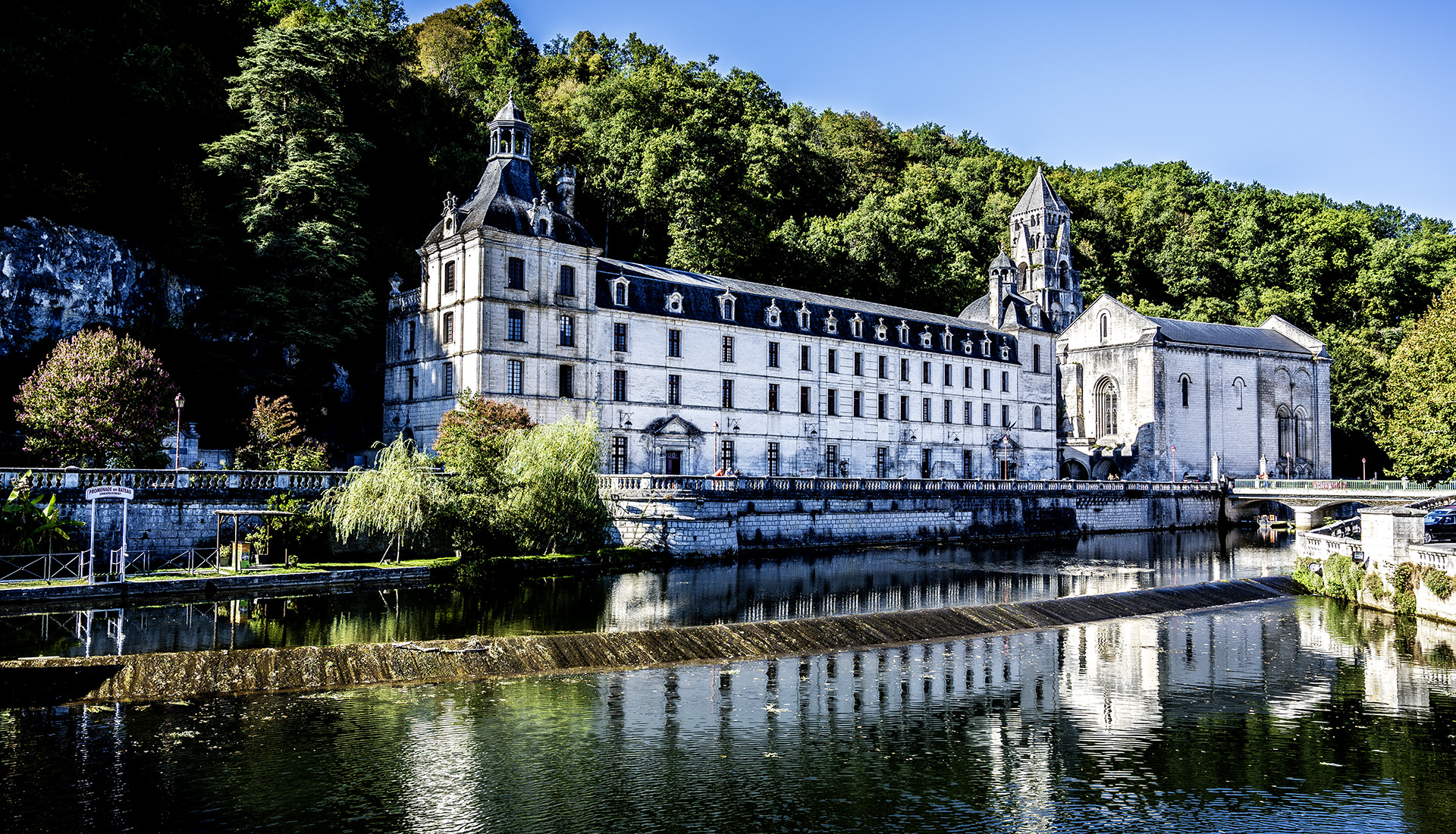
Brantôme is also known as the Venice of the Périgord. It is located in the Périgord Vert north of Périgueux. There are beautiful monuments to see during a pleasant visit, lots of water where there is always something new happening and a village center that is old - but not a museum.
The Site troglodytic of Brantôme Abbey is a real attraction. Here you will find traces of the "dwellings" of the first Benedictine monks from the 8th century. Caves as houses, dovecotes, the Saint-Sapalo well, the excavated grotto "Cave of the Last Judgement", in which there are two bas-reliefs. One of them is very enigmatic. Saint-Pierre de Brantôme Abbey is a rectangular church with three naves, two for the nave and one for the choir, which was rebuilt after the Hundred Years' War. The ensemble is crowned by three Angevin vaults with a strong arched profile. It dates back to the 15th century and is dedicated to St. Peter and St. Sapalo, one of the innocent saints of Bethlehem who, according to the Gospel of Matthew, were killed on the orders of King Herod. A fragment of the child's relic is kept in an elegant shrine in the church. Saint Sapalo is located on one of the many secondary axes leading from Vézelay to Santiago de Compostela and was venerated by numerous pilgrims. In the 19th century, the church was added to the list of historical monuments and restored by the architect Paul Abadie (1812-1884).
Roubaix, France
Go for a university city with an industrial past
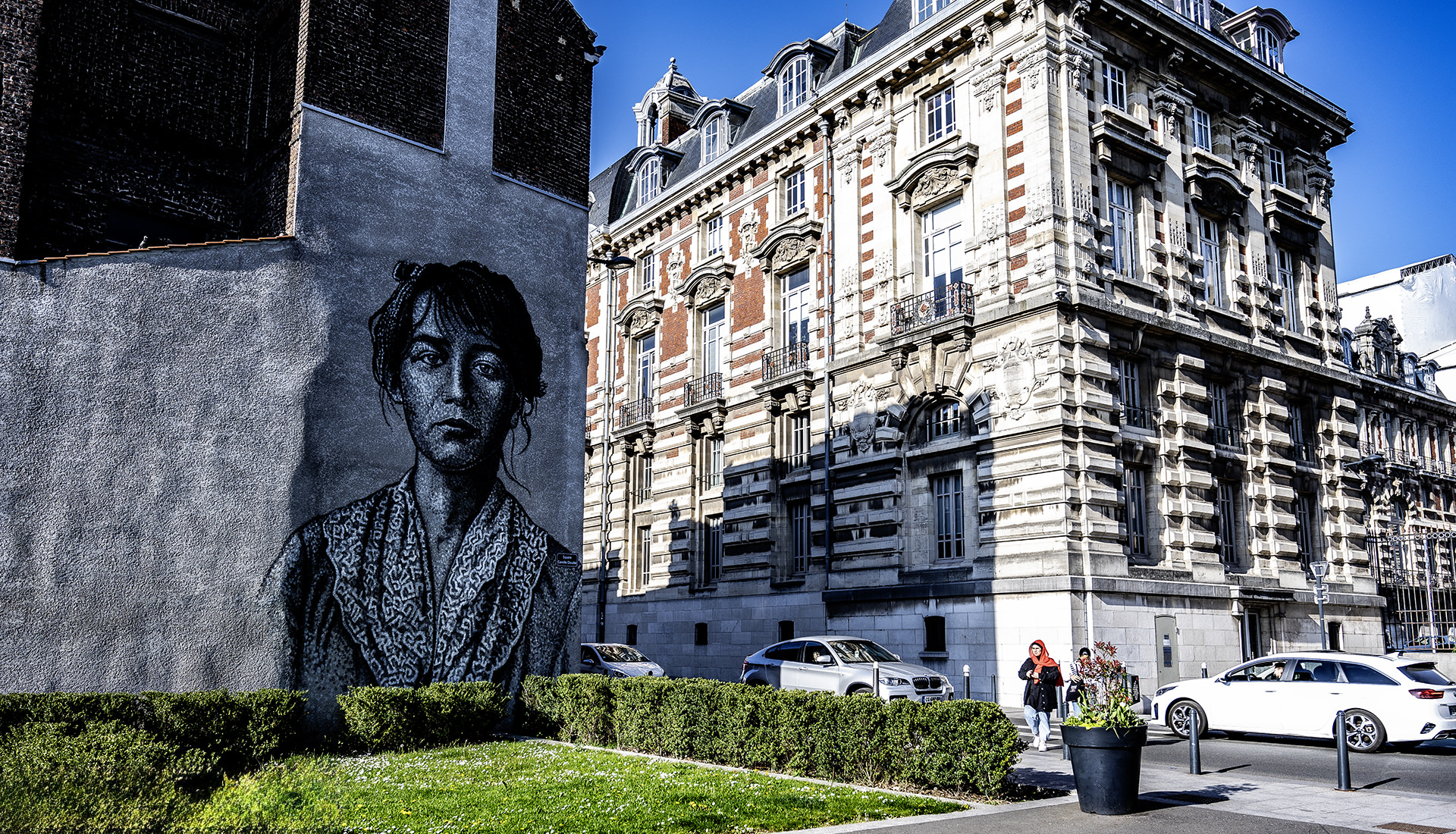
Roubaix has suffered the decline of the textile industry and the associated mechanical engineering for looms, as well as the end of coal mining. Today, a structural change is taking place, new things are being created that unfortunately do not always last and new things that remain.
Against this historical backdrop, it is possible to observe the growth of the artistic scene. And it is exciting to engage with the themes that are developing here. It is somewhat reminiscent of Berlin in the 90s. Street art accompanies visitors everywhere in the city, sometimes with decidedly subversive statements. Art accompanies us in all its forms not only in large museums, but also as textile design, which continues the centuries-old traditions of weaving and fabric production in its own way. If you want to visit Roubaix , you should plan more than just a normal stroll through the city: a spontaneous conversation in one of the many restaurants can lead to exciting things. And these are usually the memories that are remembered fondly even years later. For our short visit to Roubaix, we chose three highlights that we thought were typical of the city and the times. In the Roubaix Manufactory Museum, we see old looms, gain an insight into textile production dating back to the Middle Ages and recognize some of the reasons that led to the relocation of this industry. Art, which has also found its place in an old factory building, can be found in La Condition Publique, where international, contemporary art and current social issues captivate visitors.
LouvreLens, France
Go for a visit to the Louvre in an old mining region
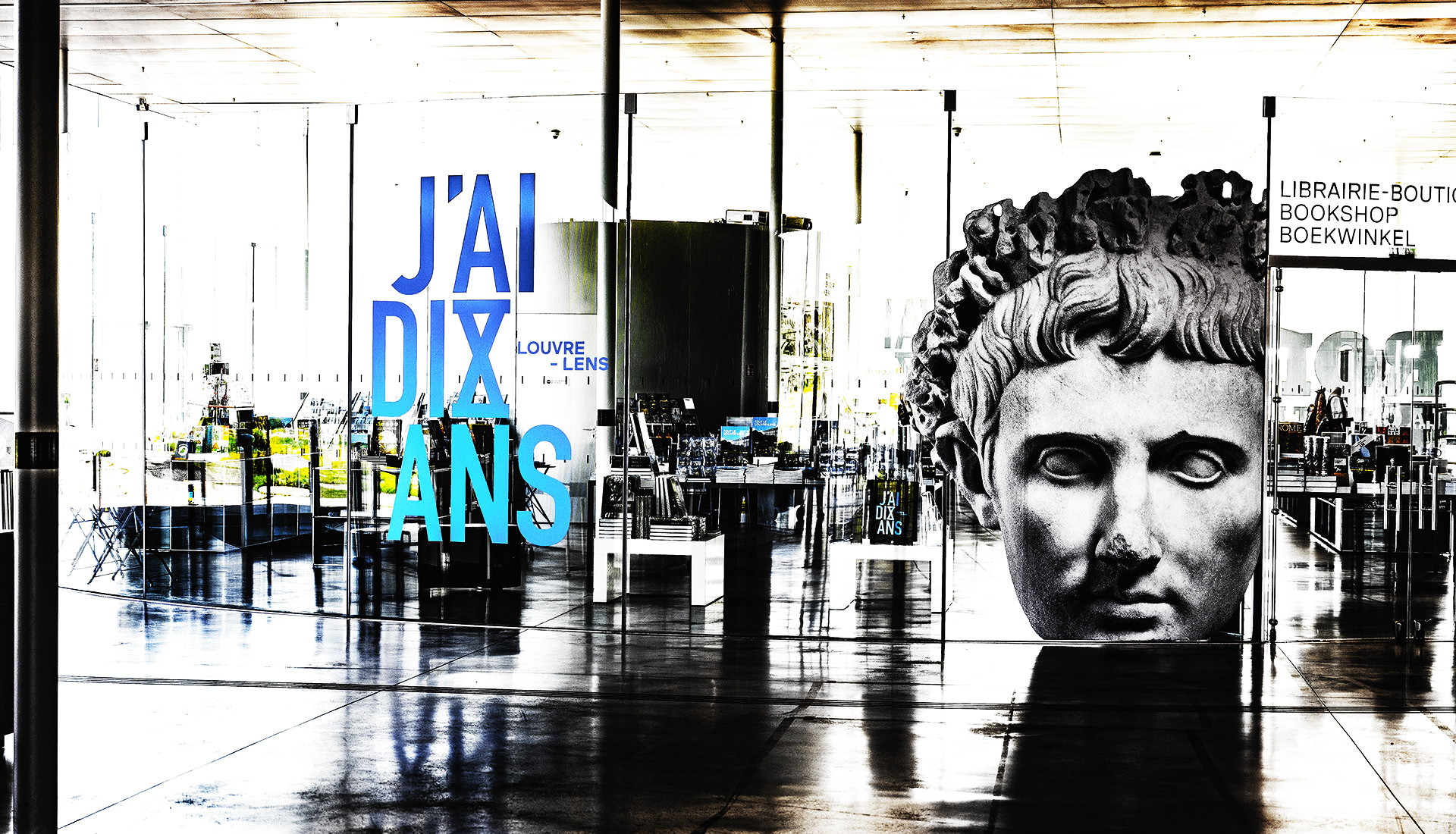
The Musée du Louvre-Lens, which opened in December 2012, is located in the small mining town of Lens, which has around 30,000 inhabitants and lies in the heart of the Nord-Pas de Calais mining region.
The Galerie du Temps is the heart of the Louvre-Lens. It houses more than 200 masterpieces from the Louvre collections in a spectacular 3,000 m² exhibition space. Here you can follow a unique journey through the history of art, from the invention of writing in Mesopotamia in the 4th millennium BC to the Industrial Revolution in the mid-19th century. The installation, which is both chronological and multidisciplinary, creates a dialogue between epochs, techniques and civilizations. On November 29, 2004, Prime Minister Jean-Pierre Raffarin announced that Lens had been chosen as the site for the new Louvre. The decision to set up in the former Pit 9 of Lens is intended to express French recognition of an area that has been damaged several times by war and coal mining. Shaped by its mining past and history, Lens has taken up the challenge of shaping its future. Kazuyo Sejima and Ryue Nishizawa realized the idea of creating a gentle and discreet transition to the surroundings with transparency and openness to the outside. The Louvre-Lens was built on a 20-hectare site that was occupied by shafts 9 and 9bis. Following the closure of the coal mines in 1960, the site was reclaimed by nature. In a departure from the large vertical structures often favored by architects, SANAA decided to respond to the very linear, horizontal architecture inherited from the mines with a very long building on a single level. The main structure follows the gentle slope of the terrain without ever exceeding a height of six meters, leaving the tops of the trees visible in some places. In this way, the architecture blends subtly into the surroundings without dominating them.
Château de Castelnaud, France
Go for a place where the wind of history still blows
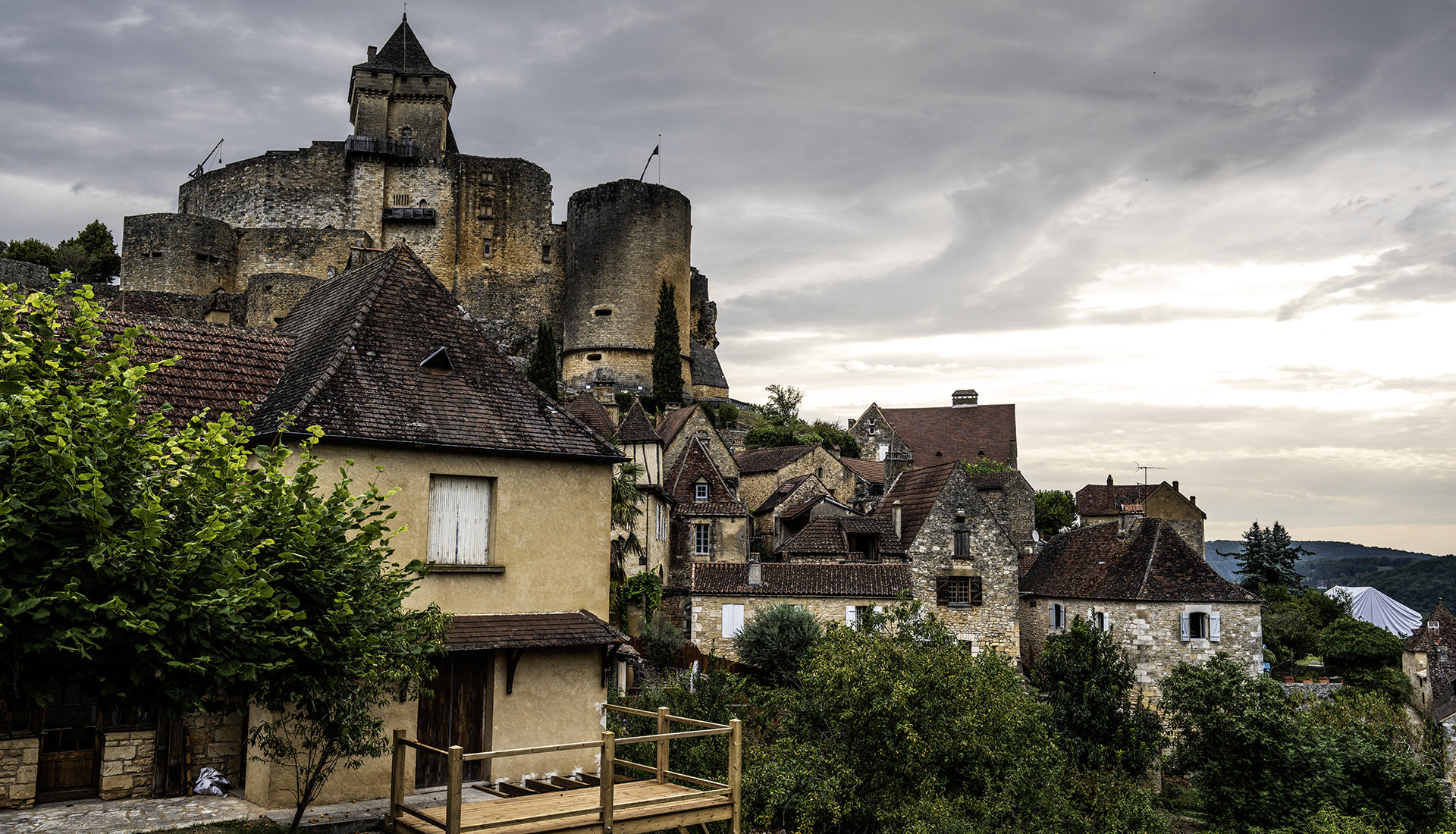
The castle is one of many medieval castles that can be found in the Périgord Noir along the Dordogne. Perched on a rock not far from Sarlat-la-Canéda and Bergérac, it stands on the banks of the Dordogne opposite another fortification, Beynac Castle.
Castelnaud Castle was first mentioned with historical certainty in 1214, when Simon IV de Montfort, leader of the crusade against the Albigensians, conquered the castle on behalf of Pope Innocent III and returned it to the ownership of the French King Philip II. During the Hundred Years' War, Castelnaud was a strategically important fortress due to its exposed, difficult-to-attack location high above the river and changed hands several times. At the beginning of the French Revolution in 1789, Castelnaud was plundered and set on fire. However, the walls were preserved until 1832, when it was decided to use the castle as a quarry to build embankments for the Dordogne. During the Wars of Religion from 1562 to 1598, one of the most important Huguenots, Geoffroy de Vivans, ruled over Castelnaud. De Vivans was in the direct favor of Henry IV and successfully used his powerful position in the region - Castelnaud was not exposed to any attacks during this time. At the end of the 16th century, Jacques Nompar de Caumont once again had extensive extensions carried out, but Castelnaud became increasingly less important. The beginning of the French Revolution in 1789 brought the "end". Castelnaud was looted and set on fire. The masonry was preserved until 1832 and was used as a quarry for embankments on the Dordogne and for building houses in the village.
Lille, France
Go for a lively, old and yet modern city in northern France
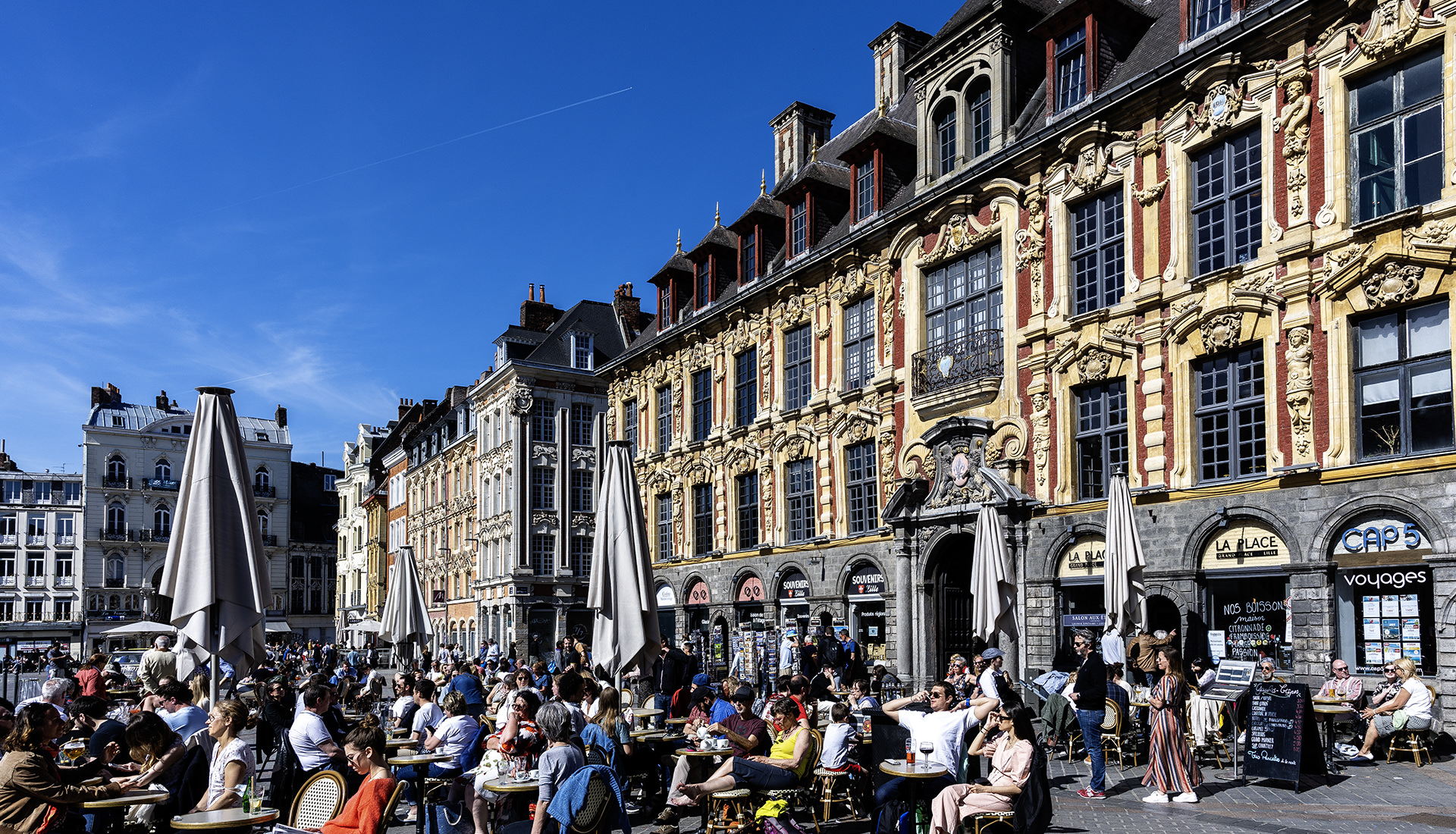
Lille is the capital of the Nord department in the Hauts-de-France region. It is located just a few kilometers south of the invisible border with Belgium and is part of Flanders. - The "capital of Flanders", as it is known in France, looks back on a breathtaking and eventful history.
In Lille you can stroll around the city like - almost - anywhere else in the world: Look at shop windows in the shopping streets, go into a store, do some shopping, then grab a bite to eat in the nearest café or restaurant and then head back to your hotel or another type of sleeping accommodation. It works like anywhere else in the world, but the capital of the Hauts-de-France region remains perhaps the most underrated metropolis in France. In recent decades, the country's fourth largest city (in terms of urban area) has transformed itself from an industrial center into a vibrant cultural and commercial hub. Highlights include the charming old town with its magnificent French and Flemish architecture, museums, stylish stores, excellent cuisine, a nightlife livened up by 67,000 university students and around 1,600 designers in the surrounding area. And there are places to linger, relax and maybe even have a coffee or two. We found one of them right on the edge of the old town. It is the green lung of the city that surrounds the citadel area, shaded by trees between canals, footpaths and cycle paths. The Grand Place is also known as Place du Général de Gaulle. The future President Frances was born here in 1890. Then as now, the square is the center of the city. Since the 17th century, there has been lively trade here, the magnificent Old Stock Exchange is clear evidence of this. Directly behind it is the city's second important square: the Place du Théâtre with the Opera and the Chamber of Commerce, which has complemented the Old Stock Exchange since the 20th century.

